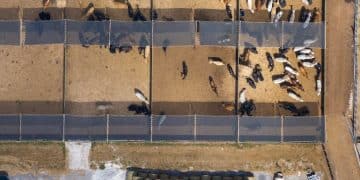Building a Strong Board: Sustainable Animal Rescue in the US

Building a strong board of directors is essential for ensuring the long-term sustainability of your local animal rescue in the US by providing strategic oversight, financial stability, and community engagement, which collectively contribute to the organization’s ability to fulfill its mission effectively.
Many local animal rescues in the US operate on passion and dedication, but to truly thrive and ensure long-term sustainability, a strong foundation is needed. Building a strong board of directors is crucial, providing the guidance, resources, and oversight necessary to navigate challenges and achieve organizational goals. How can your rescue build such a board?
Why a Strong Board Matters for Animal Rescues
A strong board of directors acts as the backbone of any successful non-profit organization, especially for local animal rescues. They bring diverse expertise and perspectives that are invaluable for strategic planning and decision-making and ensure the organization remains focused on its mission. They also provide essential resources like fundraising and community outreach to bolster the growth of the rescue.
Without a well-structured and engaged board, animal rescues risk facing numerous challenges, including financial instability, inadequate governance, and a lack of strategic direction. This can lead to operational inefficiencies, decreased effectiveness, and ultimately, a diminished ability to save and care for animals in need.
Essential Roles and Responsibilities
The primary responsibilities of a board of directors include setting strategic direction, ensuring financial stability, and overseeing organizational performance. Here’s a closer look:
- Strategic Planning: Developing and implementing long-term goals and objectives.
- Financial Oversight: Managing budgets, fundraising efforts, and ensuring financial compliance.
- Governance: Establishing policies and procedures to ensure ethical and legal operations.
- Community Engagement: Representing the organization in the community and fostering relationships with stakeholders.
The board also ensures the animal rescue operates in accordance with its mission and values, adheres to legal and ethical standards, and remains accountable to its donors, volunteers, and the community it serves.
In conclusion, a strong animal rescue board of directors is essential because it provides a solid foundation for long-term success, ensuring effective governance, financial stability, and strategic direction so the organization can continue to help animals for years to come.
Recruiting Passionate and Skilled Board Members
The success of your board hinges on recruiting individuals who are not only passionate about animal welfare but also possess diverse skills and experiences. Effective recruitment involves identifying specific needs, targeting potential candidates and implementing a structured selection process.
Recruiting board members is not merely about filling seats; it’s about building a team of dedicated individuals committed to the rescue’s mission and equipped to provide effective guidance and support.

Identifying Key Skillsets
Before starting the recruitment process, assess your animal rescue’s current needs and identify the skillsets that are lacking on the current board. Look for diverse expertise to create a well-rounded team:
- Financial Expertise: Accounting, budgeting, and financial management
- Legal Knowledge: Understanding of non-profit law and compliance
- Marketing and Communications: Public relations, social media, and brand management
- Fundraising Experience: Grant writing, donor relations, and event planning
Finding the right blend of skills ensures that the board can effectively address all aspects of the organizations operations and strategic goals.
Where to Find Potential Candidates
Finding qualified board members requires tapping into various networks and resources. Think broadly and strategically about where to find individuals who are both passionate and skilled:
- Local Community: Reach out to local business leaders, community organizations and educational institutions.
- Professional Networks: Utilize professional associations and industry contacts.
- Volunteer Base: Current volunteers who have shown commitment and passion for the rescue’s mission.
- Online Platforms: Utilize LinkedIn, Indeed, and other platforms to advertise board member positions.
Engaging a diverse range of channels can help your animal rescue identify potential board members with the necessary expertise and dedication.
In conclusion, successful animal rescue board member recruitment depends on identifying needed skillsets and actively seeking out candidates from diverse channels, building a strong and effective team.
Defining Roles and Responsibilities Clearly
Clearly defining roles and responsibilities from the outset is essential for a productive and efficient board. Establishing clear expectations prevents misunderstandings, streamlines decision-making, and ensures board members are accountable for their contributions. It cultivates a culture of transparency and collaborative success.
Ambiguity in roles and responsibilities can lead to confusion, duplication of effort, and decreased accountability, all of which can undermine the board’s effectiveness.
Creating a Board Member Agreement
A formal board member agreement outlines the expectations, responsibilities, and commitments of each board member. This agreement should cover:
- Term Length: Specify the duration of their term.
- Time Commitment: Estimate the hours per month required for meetings, events, and other activities.
- Specific Duties: Detail their responsibilities, such as fundraising, committee work, or community outreach.
- Code of Conduct: Outline ethical and professional standards.
By establishing a board member agreement, the animal rescue can improve accountability and commitment on the animal rescue board of directors and ensure all members are driving the animal rescue in the same direction.

Outlining these specifics ensures that each member understands their role and can fulfill their duties effectively.
Standing Committees and Their Functions
Creating standing committees focused on specific areas allows the board to delegate responsibilities and leverage specialized expertise. Common committees include:
- Finance Committee: Responsible for budgeting, financial oversight, and audit preparation.
- Fundraising Committee: Focuses on developing and implementing fundraising strategies.
- Program Committee: Oversees the animal rescue’s programs and services.
- Governance Committee: Ensures compliance with regulations and best practices.
By dividing responsibilities among committees, the board can handle a greater workload and ensure that each area of the animal rescue receives adequate attention.
In conclusion, clearly defined roles and responsibilities, facilitated by board member agreements and standing committees, are critical for effective animal rescue and board governance and operational efficiency.
Effective Meeting Management and Decision-Making
Effective meeting management is crucial for ensuring that board meetings are productive, engaging, and contribute to informed decision-making. Regular, well-structured meetings enable the board to stay informed, discuss critical issues, and make strategic decisions that drive the organization forward. Without effective meeting management, board meetings can become unproductive, leading to disengagement and poor decision-making.
Streamlining discussions and decision-making processes helps maximize the value of the board’s time and ensures that important matters are addressed promptly and effectively.
Creating a Structured Agenda
A well-structured agenda is the foundation of an effective board meeting. The agenda should be:
- Timely: Distributed to board members well in advance of the meeting.
- Focused: Prioritize key issues and strategic topics.
- Clear: Include specific objectives for each agenda item.
By following a structured agenda, the animal rescue board can ensure that meetings stay focused, productive, and aligned with the organization’s goals and objectives.
Encouraging Active Participation
Encouraging active participation from all board members is essential for fostering a collaborative and engaged environment. Here are a few strategies to promote participation:
- Creating Safe Space: Encouraging open dialogue where all opinions are valued.
- Assigning Pre-Meeting Tasks: Distributing materials and questions beforehand to encourage preparedness.
- Using Facilitation Techniques: Employing methods that promote discussion and ensure everyone has a chance to speak.
Greater engagement generates more diverse viewpoints, and cultivates a much more collaborative and effective environment to help steer the animal rescue in the correct direction.
In conclusion, effective meeting management and decision-making practices, including structured agendas and encouraged participation, are critical for maximizing the board’s productivity and effectiveness.
Financial Oversight and Fundraising Strategies
Sound financial oversight and innovative fundraising strategies are at the heart of ensuring the long-term sustainability of any animal rescue. The strong board of directors plays a vital role in managing the organization’s finances responsibly and securing the resources needed to support its mission.
Without effective oversight and fundraising, animal rescues struggle to maintain their operations, provide essential services to animals in need, and fulfill their commitments to the community.
Developing a Sound Budget
Creating and adhering to a well-structured budget is fundamental to financial stability. The budgeting process should include:
- Revenue Projections: Accurately forecasting income from donations, grants, and other sources.
- Expense Planning: Allocating resources to program services, administration, and fundraising activities.
- Regular Monitoring: Tracking actual performance against budgeted amounts and making necessary adjustments.
Sound budgets help ensure that the animal rescue operates efficiently and effectively, and that all available resources are allocated where they are most needed.
Diversifying Funding Sources
Relying on a single funding source can be risky. Diversifying funding streams provides greater financial resilience. Consider:
- Grants: Developing relationships with foundations and applying for funding opportunities.
- Individual Donations: Cultivating a base of dedicated donors.
- Events: Organizing fundraising events to engage the community and generate revenue.
The strong board of directors should always be looking for new ways to increase funding opportunities, to make the animal rescue as healthy and functional as possible.
In conclusion, sound financial oversight and diverse fundraising strategies are essential for maintaining animal rescue solvency, which ensures the organization is able to thrive and continue its mission.
Evaluating Board Performance and Making Improvements
Regularly evaluating board performance is crucial for identifying areas for improvement and ensuring ongoing effectiveness. A strong board of directors isn’t static; it evolves over time through continuous assessment and refinement of its practices.
Without evaluation and improvement, boards risk becoming stagnant, losing sight of their objectives, and failing to adapt to changing circumstances which could harm the animal rescue.
Conducting Regular Self-Assessments
Board self-assessments provide an opportunity for members to reflect on their performance and identify areas where they can improve. This process can involve:
- Individual Evaluations: Members assessing their own contributions and effectiveness.
- Group Discussions: Facilitated discussions to identify strengths and weaknesses as a collective.
- Anonymous Surveys: Gathering feedback without the fear of judgment or retribution.
Self-assessments should be conducted regularly, at least annually, to ensure ongoing improvement.
Seeking External Feedback
Seeking feedback from external stakeholders, such as staff, volunteers, and donors, can provide valuable insights into the board’s performance. Consider:
- Surveys: Gathering feedback from a broad range of stakeholders.
- Interviews: Conducting one-on-one interviews to gather more in-depth perspectives.
- Focus Groups: Facilitating group discussions to explore specific issues or concerns.
External feedback complements self-assessments by providing a more comprehensive view of the board’s impact and effectiveness.
Key Point
Brief Description
🐾 Strong Board
Essential for strategic planning and financial stability.
🌟 Passionate Members
Recruit members with diverse skills and dedication.
🤝 Clear Roles
Define member duties to ensure smooth operations.
💰 Fundraising
Diversify funding for long-term sustainability.
| Key Point | Brief Description |
|---|---|
| 🐾 Strong Board | Essential for strategic planning and financial stability. |
| 🌟 Passionate Members | Recruit members with diverse skills and dedication. |
| 🤝 Clear Roles | Define member duties to ensure smooth operations. |
| 💰 Fundraising | Diversify funding for long-term sustainability. |
[Frequently Asked Questions]
▼
A board of directors provides strategic oversight, financial stability, and community engagement, which are essential for the long-term sustainability and success of an animal rescue organization.
▼
You can find potential board members through local community networks, professional organizations, your volunteer base, and online platforms like LinkedIn and Indeed.
▼
A board member agreement should include the term length, time commitment, specific duties, and code of conduct expected of each member to ensure clarity and accountability.
▼
Board meetings can be more effective by creating a structured agenda, distributing it in advance, encouraging active participation from all members, and focusing on key strategic issues.
▼
Diversifying funding sources is important because it reduces reliance on a single source, providing greater financial stability and resilience for the animal rescue organization.
Conclusion
Building a strong board of directors is vital for the sustainability of your local animal rescue in the US. By focusing on recruiting passionate and skilled members, defining clear roles, effectively managing meetings, ensuring financial oversight, and regularly evaluating board performance, you can create a foundation for long-term success and make a greater impact on animal welfare in your community.





